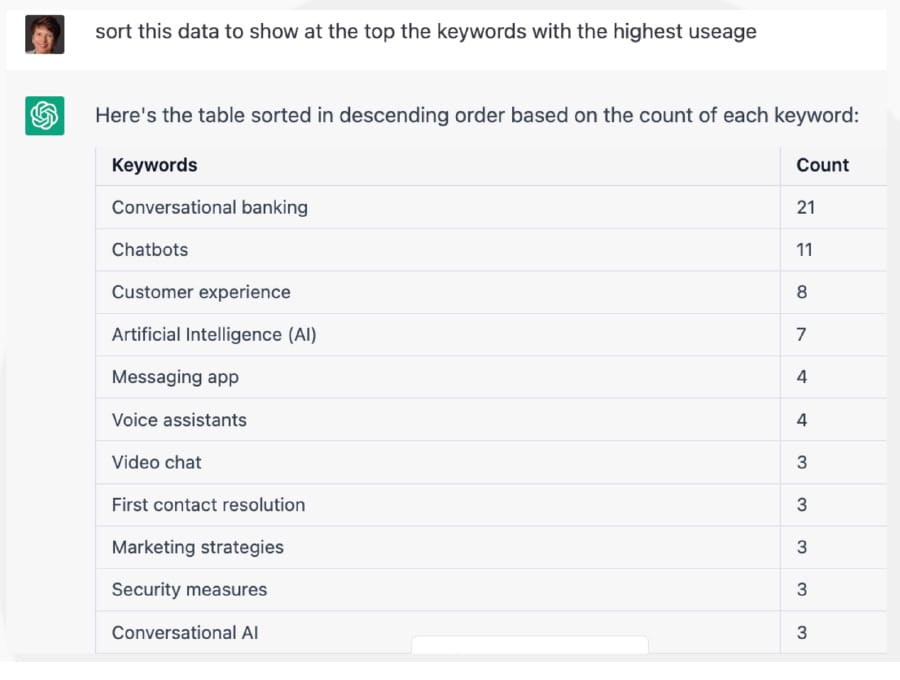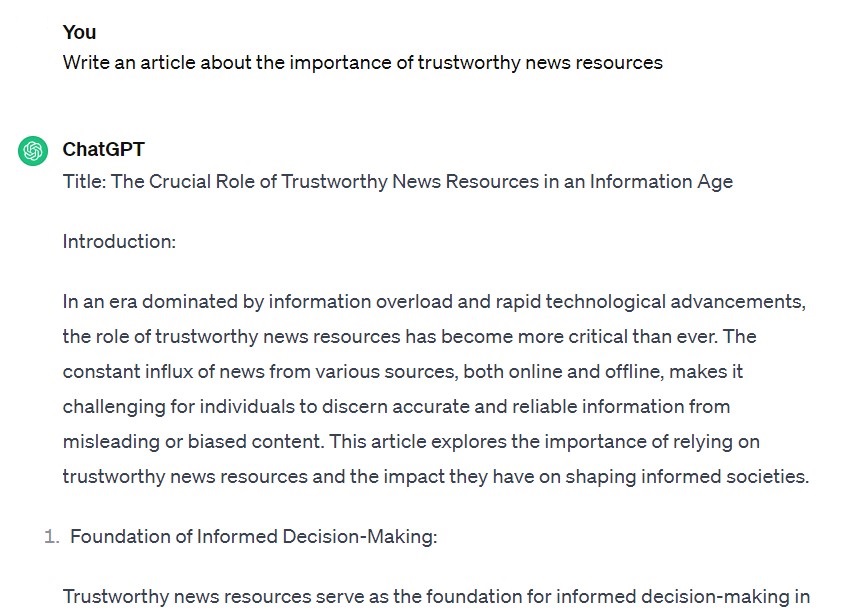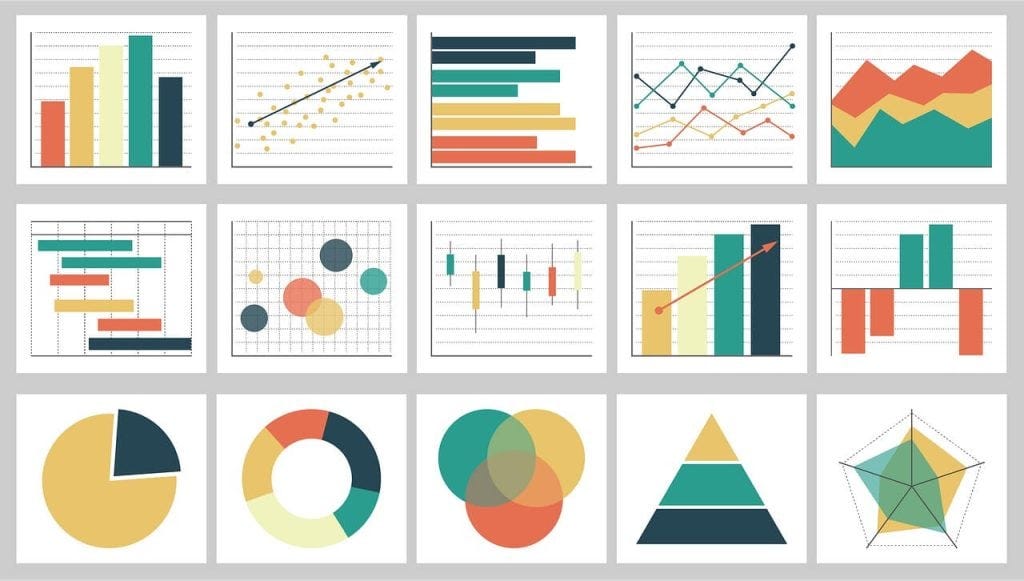
Published: Dec 3, 2024
ChatGPT Content Outlines: Your Secret Weapon for Killer Articles
ChatGPT Content Outlines: Your Secret Weapon for Killer Articles
I’ve got a confession: I used to spend hours staring at a blank page, willing my brain to magically produce the perfect article structure. But then I stumbled upon a little trick that changed everything. Now, I’m spilling the beans on how ChatGPT became my secret weapon for cranking out killer content outlines faster than you can say “writer’s block.”
TLDR: How can ChatGPT help create better content outlines?
1️⃣ What are the benefits of using ChatGPT for content outlines?
ChatGPT streamlines the outlining process, offering quick, AI-generated structure suggestions based on your topic. It helps brainstorm ideas, organize thoughts, and ensure comprehensive coverage of your subject matter, saving time and boosting creativity.
2️⃣ How do you prompt ChatGPT for effective content outlines?
To get the best results, provide clear, specific prompts to ChatGPT. Include your main topic, desired article length, target audience, and any key points you want to cover. The more detailed your input, the more tailored and useful the outline will be.
3️⃣ Can ChatGPT replace human creativity in content creation?
While ChatGPT is a powerful tool for generating outlines and ideas, it’s not a substitute for human creativity and expertise. Use it as a starting point or to overcome writer’s block, but always infuse your unique voice, insights, and experiences into the final content.
Table of Contents
- Getting Started with ChatGPT for Content Outlines
- Crafting the Perfect Prompt
- Top Picks: ChatGPT-Generated Outline Templates
- Balancing AI Assistance with Human Creativity
- Taking Your Outlines to the Next Level
- From ChatGPT Output to Polished Outline
- Overcoming Common Challenges
Getting Started with ChatGPT for Content Outlines
Let’s face it, staring at a blank page is about as fun as watching paint dry. But with ChatGPT in your corner, you’ll be churning out killer content outlines faster than you can say “writer’s block.” Here’s how to get the ball rolling:
Setting Up Your ChatGPT Account
First things first, you need to create an account on OpenAI’s platform. It’s pretty straightforward:
- Head over to the OpenAI website
- Click on the “Sign Up” button
- Follow the prompts to create your account
Once you’re in, you’ll have access to the ChatGPT playground. It’s like a sandbox for your ideas, but without the risk of finding cat poop.
Choosing the Right Model
OpenAI offers different versions of ChatGPT. As of now, the most advanced publicly available model is GPT-4. It’s like the Swiss Army knife of language models – versatile and sharp.
Understanding ChatGPT’s Superpowers (and Kryptonite)
ChatGPT is impressive, but it’s not a mind reader (thank goodness). Here’s what it can do:
- Generate ideas and structures for your content
- Offer different perspectives on your topic
- Help overcome writer’s block
But remember, it’s not:
- A replacement for your unique voice and expertise
- A fact-checking tool (always verify information)
- A crystal ball for predicting future trends
Your First Chat: Breaking the Ice
Ready to dive in? Here’s a simple prompt to get you started:
“Create an outline for a blog post about the benefits of using ChatGPT for content creation.”
Hit send and watch the magic happen. ChatGPT will spit out a basic structure faster than you can say “artificial intelligence.”
Refining Your Approach
Once you’ve got the hang of it, you can start getting more specific with your prompts. For example:
“Generate a detailed outline for a 2000-word article on sustainable travel tips for budget-conscious millennials. Include sections on transportation, accommodation, and activities.”
The more details you provide, the more tailored your outline will be. It’s like giving ChatGPT a GPS for your content journey.
Integrating ChatGPT into Your Workflow
Don’t just use ChatGPT in isolation. Integrate it with your favorite writing tools. I personally love using it alongside Notion for organizing my ideas and Grammarly for polishing my final drafts.
Keeping It Fresh: Avoiding AI Burnout
While ChatGPT is a powerhouse, don’t forget to step away from the screen occasionally. Take a walk, chat with a friend, or read a book. Real-world experiences fuel creativity in ways that AI simply can’t match.
Remember, ChatGPT is a tool, not a crutch. Use it to amplify your ideas, not replace them. With practice, you’ll find the sweet spot between AI assistance and your own creative genius. Now go forth and outline like a pro!
Crafting the Perfect Prompt
Alright, let’s dive into the art of prompt engineering. It’s not rocket science, but it does take a bit of finesse to get ChatGPT to spit out exactly what you’re looking for. Here’s how to craft prompts that’ll have ChatGPT working overtime for you:
Be Specific, Like Really Specific
Think of ChatGPT as that one friend who takes everything literally. The more details you give, the better your results will be. Instead of asking for “an outline about dogs,” try something like:
“Create a detailed outline for a 1500-word blog post about the top 5 most low-maintenance dog breeds for apartment dwellers. Include sections on temperament, exercise needs, grooming requirements, and potential health issues for each breed.”
See the difference? It’s like giving ChatGPT a treasure map instead of just saying “X marks the spot.”
Set the Tone and Style
ChatGPT is pretty good at mimicking different writing styles, but you’ve got to tell it what you want. Are you going for professional and authoritative, or more casual and conversational? Let it know upfront:
“Generate an outline for a witty, conversational blog post about the history of memes. The target audience is tech-savvy millennials. Use puns and pop culture references where appropriate.”
Use the “Act As” Technique
One neat trick is to ask ChatGPT to take on a specific role. This can help it frame the content from a particular perspective. For example:
“Act as a seasoned travel blogger with 10 years of experience. Create an outline for an article about hidden gems in Tokyo that most tourists miss. Include insider tips and off-the-beaten-path locations.”
Specify the Structure
If you have a particular format in mind, don’t be shy about spelling it out. ChatGPT can handle complex structures if you guide it:
“Create an outline for a listicle-style article with 7 main points. Each point should have a catchy subheading, a brief explanation, and 2-3 bullet points with practical tips. The topic is ‘Productivity Hacks for Work-From-Home Parents’.”
Ask for Multiple Options
Can’t decide on the best angle for your piece? Ask ChatGPT to brainstorm for you:
“Generate 3 different outline approaches for an article about the impact of social media on mental health. Include a traditional academic style, a personal narrative style, and a data-driven journalistic style.”
Incorporate Keywords for SEO
If you’re writing with search engine optimization in mind, include your target keywords in the prompt:
“Create an SEO-friendly outline for a blog post about ‘sustainable fashion brands’. Include sections that naturally incorporate related keywords like ‘eco-friendly clothing’, ‘ethical manufacturing’, and ‘slow fashion movement’.”
Refine and Iterate
Don’t expect perfection on the first try. Use ChatGPT’s output as a starting point and then refine your prompt based on what you get. It might look something like this:
- Initial prompt: “Outline an article about coffee brewing methods.”
- Refine: “Expand on the previous outline, adding more detail to the section about pour-over coffee. Include information about the Hario V60 and Chemex brewers.”
- Further refine: “In the pour-over section, add a subsection about the importance of water temperature and grind size.”
Learn from What Works
Keep a swipe file of prompts that have worked well for you in the past. I use Evernote to store my greatest hits. It’s like building your own prompt cookbook – and trust me, you’ll be glad you did when you’re on a tight deadline.
Remember, crafting the perfect prompt is part science, part art, and a dash of trial and error. Don’t be afraid to experiment and find what works best for your writing style and needs. With practice, you’ll be a prompt-crafting pro in no time, churning out killer outlines faster than you can say “artificial intelligence.”
Top Picks: ChatGPT-Generated Outline Templates
Ready to supercharge your content creation? I’ve got a treasure trove of ChatGPT-generated outline templates that’ll make your articles pop. Let’s dive into some of my favorites and see how they can work for you.
How-To Guide Template
This template is perfect for breaking down complex processes into digestible steps. Here’s what it looks like:
- Introduction
- Hook the reader
- Explain why the topic matters
- What You’ll Need
- List of tools or prerequisites
- Step-by-Step Instructions
- Step 1: [Specific action]
- Step 2: [Specific action]
- …
- Common Pitfalls and How to Avoid Them
- Tips for Success
- Conclusion
- Recap key points
- Encourage reader to take action
I used this template when writing about setting up a home office, and it worked like a charm. The step-by-step format keeps things clear and actionable.
Listicle Template
Listicles are reader favorites, and for good reason. They’re scannable and packed with info. Here’s a solid structure:
- Introduction
- Explain the list’s purpose
- Item 1
- Brief description
- Why it matters
- Real-world example
- Item 2
- [Same structure as Item 1]
- …
- Conclusion
- Summarize key takeaways
- Call-to-action
I’ve used this for everything from “Top 10 Travel Destinations” to “5 Must-Have Kitchen Gadgets.” It’s versatile and keeps readers scrolling.
Product Review Template
For all you bloggers out there diving into product reviews, this template is gold:
- Product Overview
- Key features
- Target audience
- First Impressions
- Unboxing experience
- Initial setup
- Performance
- Key feature 1
- Key feature 2
- …
- Pros and Cons
- What we loved
- What could be improved
- Comparison to Competitors
- Who It’s For (and Who It’s Not For)
- Final Verdict
- Overall rating
- Recommendation
This structure works wonders for in-depth reviews. I recently used it for a DJI Mavic Air 2 drone review, and readers loved the comprehensive breakdown.
Problem-Solution Article Template
Got a burning issue your readers need solved? This template’s got you covered:
- Introduce the Problem
- Why it matters
- Who it affects
- Root Causes
- Factor 1
- Factor 2
- …
- Common Misconceptions
- Solution 1
- How it works
- Pros and cons
- Solution 2
- [Same structure as Solution 1]
- …
- Preventive Measures
- When to Seek Professional Help
- Conclusion
- Recap best solutions
- Empower readers to take action
This template was a lifesaver when I wrote about dealing with burnout in the tech industry. It helps structure complex topics in a reader-friendly way.
Comparison Article Template
Stuck between two options? This template helps break it down:
- Introduction
- Why these options matter
- Option A Overview
- Key features
- Target audience
- Option B Overview
- [Same structure as Option A]
- Head-to-Head Comparison
- Feature 1
- Feature 2
- …
- Unique Strengths
- Option A’s edge
- Option B’s advantage
- Price Comparison
- User Reviews and Feedback
- Final Verdict
- Best for [specific use case]
- Best overall value
I used this to compare Shopify vs WooCommerce for e-commerce beginners. It helps readers make informed decisions without drowning in details.
Expert Roundup Template
Want to add some serious authority to your content? This template brings in the big guns:
- Introduction
- Topic importance
- How experts were chosen
- Expert 1
- Brief bio
- Their take on the topic
- Key quote
- Expert 2
- [Same structure as Expert 1]
- …
- Common Themes
- Unique Perspectives
- Practical Takeaways
- Conclusion
- Synthesize expert opinions
- Your final thoughts
This template was a game-changer when I wrote about the future of remote work. I reached out to leaders at companies like Basecamp and Buffer, and their insights made the article pop.
Remember, these templates are just starting points. Don’t be afraid to tweak them to fit your specific needs. And hey, if you’re feeling stuck, try mixing and matching elements from different templates. That’s how some of my best-performing articles came to life.
Now go forth and outline like a pro! Your readers (and your stress levels) will thank you.
Balancing AI Assistance with Human Creativity
Let’s face it, ChatGPT is like that super-smart friend who’s always ready to brainstorm. But just like you wouldn’t let your buddy write your entire thesis, you shouldn’t rely solely on AI for your content. Here’s how to strike that perfect balance between AI assistance and your own creative genius:
Embrace the AI Springboard
Think of ChatGPT as your creative trampoline. It can help you bounce higher, but you’re still the one doing the flips. Here’s how to use it:
Idea Generation: Use ChatGPT to spit out a bunch of article ideas. I once asked it for “unique angle on sustainable fashion” and ended up writing a viral piece on upcycling vintage band t-shirts.
Outline Expansion: Feed ChatGPT your basic outline and ask it to suggest additional subtopics. When I was writing about home brewing, it reminded me to include a section on water chemistry that I’d completely forgotten.
Writer’s Block Buster: Stuck on a particular section? Ask ChatGPT to generate a few sentences to get you going. It’s like greasing the wheels of your brain.
Inject Your Personal Flair
AI can give you the bones, but you need to add the flesh. Here’s how:
Share Personal Anecdotes: ChatGPT can’t tell that story about the time you accidentally dyed your dog blue while tie-dying shirts. But your readers will love it.
Add Expert Insights: If you’ve interviewed experts or have specialized knowledge, weave it in. I once wrote about rock climbing and included tips from my chat with Alex Honnold. ChatGPT couldn’t have done that!
Infuse Your Voice: Read your AI-generated outline aloud. Does it sound like you? If not, rewrite it in your own words. Your unique voice is what keeps readers coming back.
Fact-Check Like Your Reputation Depends On It (Because It Does)
ChatGPT is many things, but it’s not a fact-checking tool. Here’s how to keep things accurate:
Verify Statistics: If ChatGPT suggests a statistic, always double-check it. I once caught it quoting outdated recycling figures that would have made me look pretty silly.
Cross-Reference Sources: Use trusted sources like academic journals, government websites, or reputable news outlets to verify information. The Pew Research Center and Reuters are my go-to’s for solid data.
Stay Current: ChatGPT’s knowledge has a cutoff date. For topics that change rapidly (like tech or current events), make sure you’re adding the latest info.
Use AI to Enhance, Not Replace, Your Research
AI is a tool, not a shortcut. Here’s how to use it wisely:
Generate Research Questions: Ask ChatGPT to come up with a list of questions about your topic. Then, go find the answers yourself. When I wrote about sustainable fishing, ChatGPT helped me formulate questions that led me to some fascinating Marine Stewardship Council reports.
Identify Knowledge Gaps: Use ChatGPT to outline what you know, then focus your research on filling in the blanks. It’s like having a study buddy who helps you spot what you need to learn.
Find Unique Angles: Ask ChatGPT for unconventional perspectives on your topic. For a piece on urban gardening, it suggested exploring the connection with mental health, which became the article’s unique selling point.
Ethical Considerations: Keeping It Real
Transparency is key when using AI. Here’s how to stay ethical:
Disclose AI Usage: If AI played a significant role in your content creation, consider mentioning it. Your readers will appreciate the honesty.
Avoid Over-Reliance: Set a personal rule for how much of your content can be AI-generated. I aim for no more than 20% AI-assisted content in my final drafts.
Respect Copyright: Remember, ChatGPT can sometimes reproduce copyrighted material. Always rephrase in your own words and cite sources properly.
The Human Touch: What AI Can’t Replace
Some things are uniquely human. Don’t forget to add:
Emotion and Empathy: Share how topics make you feel. When I wrote about sustainable fashion, I described the guilt I felt about my fast-fashion past and how it motivated me to change.
Cultural Nuances: AI might miss subtle cultural references. Your understanding of local customs or pop culture can make your content resonate more deeply with your audience.
Ethical Judgments: On controversial topics, AI tends to be neutral. Your reasoned opinion, backed by facts and personal experience, adds value.
Remember, ChatGPT is a powerful ally in your content creation arsenal, but it’s not the whole army. Use it to amplify your creativity, not replace it. Your unique experiences, voice, and insights are what will make your content stand out in a sea of AI-generated noise. Now go forth and create something beautifully, uniquely human!
Taking Your Outlines to the Next Level
Alright, you’ve got the basics down. You’re churning out decent outlines with ChatGPT faster than you can say “artificial intelligence.” But why stop there? Let’s kick things up a notch and turn those outlines into content powerhouses. Here’s how to take your ChatGPT-generated outlines from good to great:
Supercharge with SEO
First things first, let’s make sure your content plays nice with search engines:
-
- Structure key sections as questions and answers
- Use clear, concise language that Google loves to feature
-
- Plan spots in your outline to link to other relevant content on your site
- This keeps readers engaged and boosts your site’s SEO juice
Platform-Specific Tweaks
Different platforms, different rules. Adapt your outline accordingly:
-
- Focus on professional insights and industry trends
- Include a “Key Takeaways” section at the end for busy professionals
-
- Break up text with subheadings every 2-3 paragraphs
- Plan for a strong opening hook – Medium readers decide quickly if they’ll stick around
-
- Include timestamps in your outline for easy video navigation
- Plan for a strong intro and call-to-action at the end
Multimedia Integration
Don’t just stick to text. Plan for a multimedia experience:
-
- Identify key stats or processes that would work well visually
- I use Canva to create eye-catching infographics
-
- Plan sections where a short video explanation would enhance understanding
- Consider creating your own videos or finding relevant ones on YouTube
-
- Think quizzes, calculators, or interactive charts
- Tools like Typeform can help you create these
Microcontent Opportunities
Break your outline into bite-sized pieces:
-
- Highlight powerful one-liners that encapsulate key points
- These make great social media teasers
-
- Identify 5-7 key points that would work well as story slides
- Use tools like Unfold to create polished templates
-
- Plan for tall, vertical images that summarize main points
- I use Tailwind to schedule these for maximum impact
Expert Input
Elevate your content with authority:
-
- Identify spots in your outline where an expert opinion would add value
- Reach out to industry leaders for comments – you’d be surprised how many respond!
-
- Plan to include real-world examples that illustrate your points
- I once included a case study from a local coffee roaster in an article about sustainable business practices, and it really brought the concept to life
-
- Identify key statistics or trends that would benefit from visual representation
- Tools like Tableau Public can help create stunning data visualizations
Engagement Boosters
Keep your readers hooked:
-
- Plan spots to ask for reader opinions
- Use tools like Poll Everywhere to embed polls in your content
Call-to-Action (CTA) Placement
- Strategically place CTAs throughout your outline
- Mix it up – don’t just ask for likes and shares, invite comments or email sign-ups too
-
- Plan a section at the end for related content
- This keeps readers on your site and positions you as a comprehensive resource
Future-Proofing
Make your content evergreen:
-
- Plan when you’ll revisit and update the content
- I use Trello to keep track of content that needs refreshing
-
- Identify areas in your outline where you can tie in current events
- This makes your content feel fresh and relevant
-
- Structure your outline so it’s easy to add new sections or expand existing ones
- This future-proofs your content as new developments emerge in your topic area
Remember, the goal here isn’t to cram every single one of these elements into every piece of content. Pick and choose what works best for your topic and audience. The key is to think beyond the basic text outline and consider how you can create a rich, engaging experience for your readers.
I recently used this approach for an article about sustainable living. What started as a simple list of tips turned into an interactive guide with embedded videos, a carbon footprint calculator, and expert quotes from environmental scientists. The engagement was through the roof, and it’s now one of my most-shared pieces.
So go ahead, take that ChatGPT outline, and transform it into a content masterpiece. Your readers (and your traffic stats) will thank you!
From ChatGPT Output to Polished Outline
So you’ve got ChatGPT to spit out a basic outline. Great start! But let’s be real - it’s probably about as polished as a kid’s macaroni art project. Don’t worry, I’ve been there. Here’s how to turn that AI word salad into a content masterpiece:
Assess and Organize
First things first, let’s make sense of what ChatGPT gave you:
-
- Group related ideas together
- I use Miro for visual brainstorming - it’s like a digital whiteboard on steroids
Logical Flow Check
- Does the order make sense?
- Rearrange sections for a natural progression of ideas
Gap Analysis
- Identify missing information
- Look for opportunities to add depth
Inject Your Expertise
Now it’s time to make it yours:
Personal Anecdotes
- Add real-life examples
- I once shared how I accidentally used dish soap in my dishwasher - readers loved the relatability!
Industry Insights
- Incorporate your unique knowledge
- For a piece on content marketing, I added insights from my experience with HubSpot’s certification program
Current Trends
- Update with the latest developments
- Check sources like Google Trends or industry publications
SEO Optimization
Let’s make sure Google loves your outline as much as your readers will:
Keyword Integration
Header Structure
- Use H2s and H3s strategically
- Include keywords in headers where it makes sense
-
- Structure key points as Q&As
- Use bulleted or numbered lists for easy scanning
Add Multimedia Elements
Break up that text and engage your readers:
Image Placeholders
- Plan spots for relevant images or infographics
- I love using Canva for quick, professional-looking graphics
Video Integration
- Consider where a video could enhance understanding
- Maybe it’s time to dust off that YouTube channel?
Interactive Elements
- Plan for polls, quizzes, or calculators
- Tools like Typeform can help create engaging interactive content
Fact-Checking and Sourcing
Don’t let ChatGPT make you look silly:
Verify Statistics
- Double-check any numbers or claims
- I swear by Statista for reliable data
Add Credible Sources
- Link to reputable studies or articles
- Google Scholar is great for finding academic sources
Expert Quotes
- Reach out to industry experts for comments
- Even a quick LinkedIn message can sometimes score you a great quote
Engagement Boosters
Keep your readers hooked from start to finish:
Strong Introduction
- Craft a compelling hook
- Consider starting with a surprising stat or provocative question
-
- Use transition phrases to keep readers moving
- Phrases like “But here’s the kicker…” or “You might be wondering…”
Call-to-Action (CTA) Placement
- Strategically place CTAs throughout
- Mix it up - ask for comments, shares, or email sign-ups
Final Polishing Touches
Time to make it shine:
Tone and Voice Check
- Ensure consistency throughout
- Read it aloud - does it sound like you?
Formatting for Readability
- Break up long paragraphs
- Use bullet points and numbered lists for easy scanning
-
- Craft attention-grabbing headers and subheaders
- I use CoSchedule’s Headline Analyzer to score my headlines
Remember, ChatGPT is your starting point, not your finish line. I once used it to outline an article about urban gardening. The initial outline was okay, but after applying these steps, it transformed into a comprehensive guide that included expert tips from a local master gardener, DIY project ideas, and even a section on vertical gardening techniques for small spaces. It ended up being one of my most-shared pieces that year.
So take that AI-generated outline and make it uniquely yours. Your readers will appreciate the extra effort, and your content will stand out in the sea of cookie-cutter articles. Now go forth and create something awesome!
Overcoming Common Challenges
Let’s face it, using ChatGPT for content outlines isn’t always smooth sailing. I’ve hit my fair share of snags, but I’ve also figured out some nifty workarounds. Here’s how to tackle the most common headaches:
Irrelevant or Off-Topic Suggestions
Sometimes ChatGPT goes off on a tangent faster than your uncle at Thanksgiving dinner. Here’s how to rein it in:
-
- Be ultra-specific in your prompts
- Example: Instead of “Give me an outline about dogs,” try “Create an outline for a 1500-word article about the best hypoallergenic dog breeds for first-time owners living in apartments”
Context Setting
- Provide background info before asking for the outline
- I once wrote, “I’m a pet nutritionist writing for a blog aimed at eco-conscious millennials. Create an outline for…” The results were spot-on!
Iterative Prompting
- Use ChatGPT’s output as a starting point, then ask follow-up questions
- “Great start. Now, can you expand on point 3 with a focus on…”
Lack of Depth or Expertise
ChatGPT is a jack of all trades, but sometimes you need a master of one. Here’s how to dig deeper:
Subject Matter Expert (SME) Prompts

- Ask ChatGPT to generate an outline “as an expert in [specific field]”
- For a piece on sustainable fashion, I used: “As a fashion sustainability consultant with 10 years of experience…”
Research Integration
- Do some preliminary research, then feed key points to ChatGPT
- “Based on recent studies by The Ellen MacArthur Foundation, create an outline that incorporates…”
-
- Ask ChatGPT probing questions about its own output
- “Why is point 2 important? What are the potential counterarguments?”
Repetitive or Cliché Content
If your outline feels about as fresh as last week’s leftovers, try these tricks:
Unique Angle Requests
- Ask for unconventional perspectives
- “Generate an outline about work-life balance from the viewpoint of a digital nomad living in Bali”
-
- Request an outline that challenges common wisdom
- “Create an outline for an article titled ‘5 Reasons Why Following Your Passion Might Be Bad Advice’”
Cross-Industry Insights
- Blend ideas from different fields
- For a marketing article, I once asked: “Create an outline that applies principles of permaculture to digital marketing strategies”
Difficulty with Niche or Technical Topics
When ChatGPT seems out of its depth, here’s how to get it up to speed:
-
- Provide key terms and definitions before requesting the outline
- For a piece on blockchain, I started with: “Blockchain is a decentralized, distributed ledger technology. Smart contracts are self-executing contracts with the terms directly written into code. Now, create an outline…”
Incremental Complexity
- Start with a basic outline, then gradually increase complexity
- Begin with: “Create a simple outline about cryptocurrency for beginners.” Then follow up with: “Now, expand on the section about DeFi for an audience with intermediate knowledge.”
-
- Pepper your prompt with industry-specific terms
- For a tech article: “Include sections on ‘serverless architecture’, ‘microservices’, and ‘containerization’ in the outline.”
Balancing SEO with Readability
Getting that sweet spot between search engine bait and actually readable content can be tricky. Here’s how to manage it:
-
- Group related keywords and ask ChatGPT to incorporate them naturally
- “Create an outline about home fitness, incorporating these keyword clusters: ‘bodyweight exercises, no-equipment workouts’ and ‘small space fitness, apartment-friendly exercises’”
-
- Specify the user’s search intent in your prompt
- “Generate an outline for people searching ‘how to start a podcast’, focusing on informational intent rather than commercial intent”
-
- Ask for specific structures that Google loves
- “Include a ‘Quick Answer’ section at the beginning that summarizes the key points in 50 words or less”
Maintaining Brand Voice and Style
Keeping your unique flavor while using AI can be like trying to add your secret sauce to a fast-food burger. Here’s how to make it work:
-
- Provide key elements of your brand’s style guide in the prompt
- “Our brand voice is casual, witty, and sprinkled with pop culture references. Create an outline for a blog post about financial planning for millennials using this voice.”
-
- Share a snippet of your previous work and ask ChatGPT to mimic the style
- “Here’s an intro paragraph from one of our popular posts: [insert paragraph]. Create an outline in a similar style for a new article about…”
-
- Ask ChatGPT to adopt a specific persona that matches your brand
- “You are a sassy, tech-savvy 20-something who’s obsessed with the latest gadgets. Create an outline for a review of the new iPhone from this perspective.”
Remember, these challenges are just speed bumps, not roadblocks. With a bit of creativity and persistence, you can steer ChatGPT in the right direction and create outlines that are truly tailored to your needs. I once spent an hour fine-tuning prompts for an article about quantum computing, but the resulting outline was so comprehensive that it saved me days of research and structuring.
So don’t get discouraged if you don’t nail it on the first try. Keep tweaking, keep experimenting, and soon you’ll be creating outlines that make both search engines and readers swoon. Now go forth and conquer those content challenges!

















.jpg)
